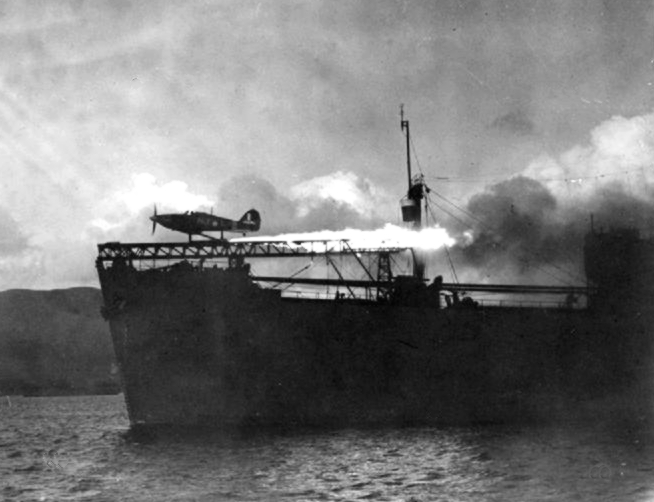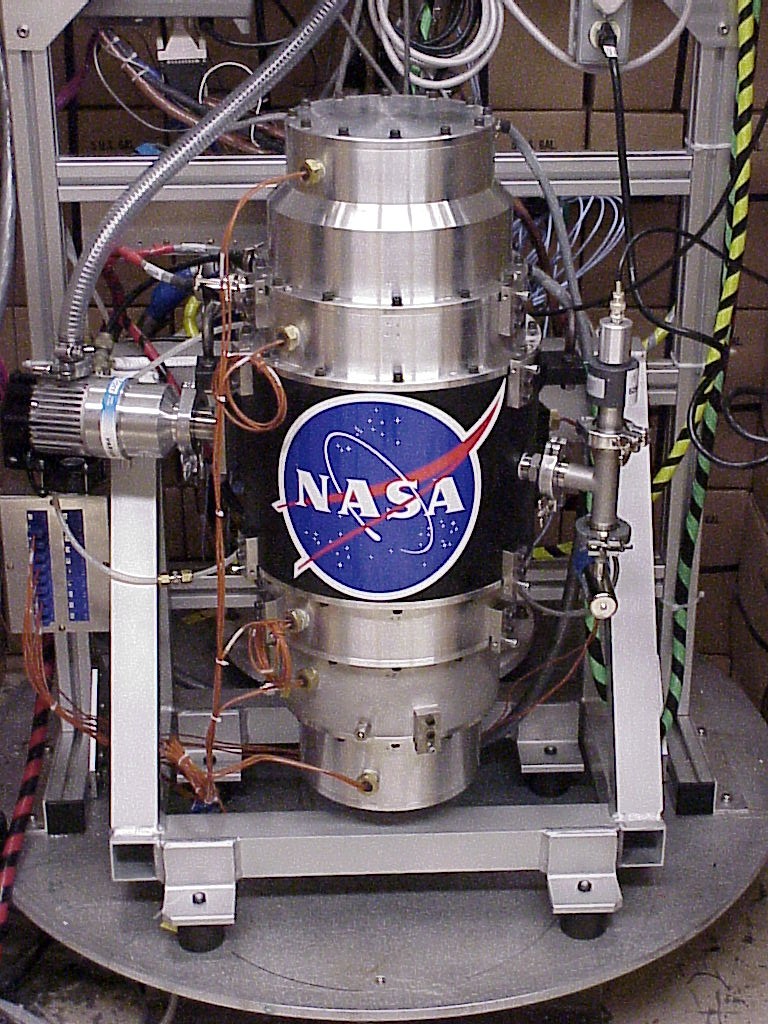|
EMALS
The Electromagnetic Aircraft Launch System (EMALS) is a type of electromagnetic catapult system developed by General Atomics for the United States Navy. The system launches carrier-based aircraft by means of a catapult employing a linear induction motor rather than the conventional steam piston, providing greater precision and faster recharge compared to steam. EMALS was first installed on the lead ship of the , USS ''Gerald R. Ford'', c. 2015. Its main advantage is that it accelerates aircraft more smoothly, putting less stress on their airframes. Compared to steam catapults, the EMALS also weighs less, is expected to cost less and require less maintenance, and can launch both heavier and lighter aircraft than a steam piston-driven system. It also reduces the carrier's requirement of fresh water, thus reducing the demand for energy-intensive desalination. Design and development Developed in the 1950s, steam catapults have proven exceptionally reliable. Carriers equipped ... [...More Info...] [...Related Items...] OR: [Wikipedia] [Google] [Baidu] [Amazon] |
Electromagnetic Catapult
An electromagnetic catapult, also called EMALS ("electromagnetic aircraft launch system") after the specific US system, is a type of aircraft launching system. Currently, only the United States and China have successfully developed it, and it is installed on the ''Gerald R. Ford''-class aircraft carriers and the Chinese aircraft carrier ''Fujian''. The system launches carrier-based aircraft by means of a catapult employing a linear induction motor rather than the conventional steam piston. Electromagnetic catapults have several advantages over their steam-based counterparts. Because the rate of aircraft acceleration is more uniform (and is configurable), stress on the airframe is reduced considerably, resulting in increased safety and endurance and lower maintenance costs for the aircraft. Electromagnetic systems also weigh less, are expected to cost less and require less maintenance, and can launch both heavier and lighter aircraft than steam catapults. They also take up le ... [...More Info...] [...Related Items...] OR: [Wikipedia] [Google] [Baidu] [Amazon] |
Aircraft Catapult
An aircraft catapult is a device used to help fixed-wing aircraft gain enough airspeed and lift for takeoff from a limited distance, typically from the deck of a ship. They are usually used on aircraft carrier flight decks as a form of assisted takeoff, but can also be installed on land-based runways, although this is rare. The catapult used on aircraft carriers consists of a track or slot built into the flight deck, below which is a large piston or ''shuttle'' that is attached through the track to the nose gear of the aircraft, or in some cases a wire rope, called a catapult bridle, is attached to the aircraft and the catapult shuttle. Other forms have been used historically, such as mounting a launching cart holding a seaplane on a long girder-built structure mounted on the deck of a warship or merchant ship, but most catapults share a similar sliding track concept. Different means have been used to propel the catapult, such as weight and derrick, gunpowder, flywheel, co ... [...More Info...] [...Related Items...] OR: [Wikipedia] [Google] [Baidu] [Amazon] |
Flywheel Energy Storage
Flywheel energy storage (FES) works by accelerating a rotor (flywheel) to a very high speed and maintaining the energy in the system as rotational energy. When energy is extracted from the system, the flywheel's rotational speed is reduced as a consequence of the principle of conservation of energy; adding energy to the system correspondingly results in an increase in the speed of the flywheel. Most FES systems use electricity to accelerate and decelerate the flywheel, but devices that directly use mechanical energy are being developed.Torotrak Toroidal variable drive CVT , retrieved June 7, 2007. Advanced FES systems have rotors made of high strength carbon-fiber composites, suspended by magnetic bearings, a ... [...More Info...] [...Related Items...] OR: [Wikipedia] [Google] [Baidu] [Amazon] |
Linear Induction Motor
A linear induction motor (LIM) is an alternating current (AC), asynchronous linear motor that works by the same general principles as other induction motors but is typically designed to directly produce motion in a straight line. Characteristically, linear induction motors have a finite primary or secondary length, which generates end-effects, whereas a conventional induction motor is arranged in an endless loop. Despite their name, not all linear induction motors produce linear motion; some linear induction motors are employed for generating rotations of large diameters where the use of a continuous primary would be very expensive. As with rotary motors, linear motors frequently run on a three-phase power supply and can support very high speeds. However, there are end-effects that reduce the motor's force, and it is often not possible to fit a gearbox to trade off force and speed. Linear induction motors are thus frequently less energy efficient than normal rotary motors for an ... [...More Info...] [...Related Items...] OR: [Wikipedia] [Google] [Baidu] [Amazon] |
General Atomics
General Atomics (GA) is an American energy and defense corporation headquartered in San Diego, California, that specializes in research and technology development. This includes physics research in support of nuclear fission and nuclear fusion energy. The company also provides research and manufacturing services for remotely operated surveillance aircraft, including its MQ-1 Predator drones, airborne sensors, and advanced electric, electronic, wireless, and laser technologies. History General Atomics was founded on July 18, 1955, in San Diego, California, by Frederic de Hoffmann with assistance from notable physicists Edward Teller and Freeman Dyson. The company was originally part of the General Atomic division of General Dynamics "for harnessing the power of nuclear technologies". GA's first offices were in the General Dynamics facility on Hancock Street in San Diego. GA also used a schoolhouse on San Diego's Barnard Street as its temporary headquarters, which it would l ... [...More Info...] [...Related Items...] OR: [Wikipedia] [Google] [Baidu] [Amazon] |
Gasoline Gallon Equivalent
Gasoline gallon equivalent (GGE) or gasoline-equivalent gallon (GEG) is the amount of an alternative fuel it takes to equal the energy content of one liquid gallon of gasoline. GGE allows consumers to compare the energy content of competing fuels against a commonly known fuel, namely gasoline. It is difficult to compare the cost of gasoline with other fuels if they are sold in different units and physical forms. GGE attempts to solve this. One GGE of CNG and one GGE of electricity have exactly the same energy content as one gallon of gasoline. In this way, GGE provides a direct comparison of gasoline with alternative fuels, including those sold as a gas (natural gas, propane, hydrogen) and as metered electricity. Definition In 1994, the US National Institute of Standards and Technology (NIST) defined "gasoline gallon equivalent (GGE) s5.660 pounds of natural gas." Compressed natural gas (CNG), for example, is a gas rather than a liquid. It can be measured by its volume in sta ... [...More Info...] [...Related Items...] OR: [Wikipedia] [Google] [Baidu] [Amazon] |
Cycloconverter
A cycloconverter (CCV) or a cycloinverter converts a constant amplitude, constant frequency Alternating current, AC waveform to another AC waveform of a lower frequency by synthesizing the output waveform from segments of the AC supply without an intermediate DC link ( and ). There are two main types of CCVs, circulating current type and blocking mode type, most commercial high power products being of the blocking mode type. Characteristics Whereas phase-controlled semiconductor controlled rectifier devices (SCR) can be used throughout the range of CCVs, low cost, low-power TRIAC-based CCVs are inherently reserved for resistive load applications. The amplitude and frequency of converters' output voltage are both variable. The output to input frequency ratio of a three-phase CCV must be less than about one-third for circulating current mode CCVs or one-half for blocking mode CCVs.Bose (2006), p. 153 Output waveform quality improves as the ''pulse number'' of switching-device bridg ... [...More Info...] [...Related Items...] OR: [Wikipedia] [Google] [Baidu] [Amazon] |
Hall-effect Sensor
A Hall effect sensor (also known as a Hall sensor or Hall probe) is any sensor incorporating one or more Hall elements, each of which produces a voltage proportional to one axial component of the magnetic field vector using the Hall effect (named for physicist Edwin Hall). Hall sensors are used for proximity sensing, positioning, speed detection, and current sensing applications and are common in industrial and consumer applications. Hundreds of millions of Hall sensor integrated circuits (ICs) are sold each year by about 50 manufacturers, with the global market around a billion dollars. Principles In a Hall sensor, a fixed DC bias current is applied along one axis across a thin strip of metal called the Hall element transducer. Sensing electrodes on opposite sides of the Hall element along ''another'' axis measure the difference in electric potential (voltage) across the axis of the electrodes. The current's charge carriers are deflected by the Lorentz force in the pre ... [...More Info...] [...Related Items...] OR: [Wikipedia] [Google] [Baidu] [Amazon] |
McDonnell Douglas T-45 Goshawk
The McDonnell Douglas (now Boeing) T-45 Goshawk is a highly modified version of the British BAE Systems Hawk land-based training jet aircraft. Manufactured by McDonnell Douglas (now Boeing) and British Aerospace (now BAE Systems), the T-45 is used by the United States Navy as an aircraft carrier-capable trainer. Development Background The T-45 Goshawk has its origins in the mid-1970s, during which time the U.S. Navy formally commenced its search for a new jet trainer aircraft to serve as a single replacement for both its T-2 Buckeye and TA-4 Skyhawk trainers. During 1978, the VTXTS advanced trainer program to meet this need was formally launched by the U.S. Navy. An Anglo- American team, comprising British aviation manufacturer British Aerospace (BAe) and American aircraft company McDonnell Douglas (MDC), decided to submit their proposal for a navalised version of BAe's land-based Hawk trainer. Other manufacturers also submitted bids, such as a rival team of French aircraft c ... [...More Info...] [...Related Items...] OR: [Wikipedia] [Google] [Baidu] [Amazon] |






